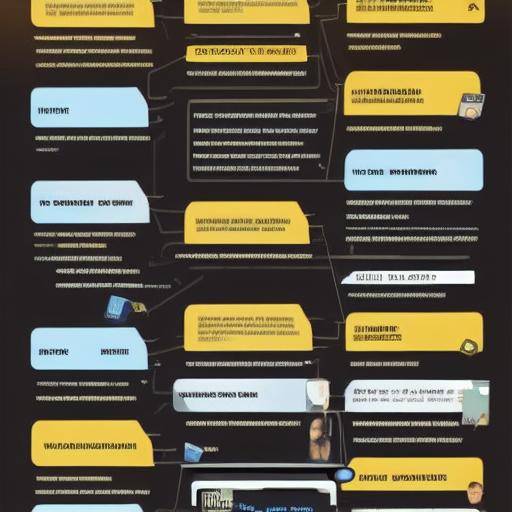
Introduction
In the digital era, the internet has brought with it great benefits, but also challenges that especially affect adolescents. One of the most worrying phenomena is the emergence of games and challenges that endanger the lives of young people, such as the infamous "Blue Whale Game". In this article, we will explore in depth the intersection between the internet, suicide and adolescents, analyzing the impact, implications and offering practical advice to protect young people from these dangers.
History and Background
The rise of the internet has revolutionized the way we communicate, access the information and entertain ourselves. However, along with its infinite possibilities, a dark side has also emerged that has affected many communities around the world. One of these phenomena is the "Blue Whale Game", a macabre game that incites participants, mostly teenagers, to carry out a series of challenges that culminate in suicide. The first documented case of this game dates back to 2013 in Russia and has since generated global concern.
Impact Detail Analysis
The impact of the internet on adolescent mental health is undeniable. Social networks, anonymous forums and accessibility to harmful content have contributed to a worrying increase in cases of suicide among young people. According to the World Health Organization, suicide is the third cause of death among young people aged 15-19 worldwide, and the Internet has played a significant role in this trend.
Viral challenges such as the "Blue Whale Game" have proved to be a real threat, taking advantage of the vulnerability and curiosity of adolescents to encourage them to participate in increasingly dangerous activities. This phenomenon has generated alarm between parents, educators and mental health experts, who seek effective solutions to counter this problem.
Comprehensive Review of Implications
It is essential to address this problem comprehensively, involving adolescents, parents, educators, health professionals and society as a whole. The awareness of the risks of the internet, the strengthening of mental health in the school and family environment, as well as the implementation of online security policies, are key aspects of mitigating this challenge.
Comparative analysis
Intersection between the internet, suicide and adolescents presents complex challenges. Although the internet can provide support and guidance resources, it also exposes young people to negative influences and toxicity. Social pressure, cyberbullying and disinformation can contribute to an environment harmful to the mental health of adolescents.
Practical Tips and Recommendations
Addressing this problem requires a multifaceted approach. Here are some practical tips to protect young people:
- Promote open and empathetic communication with adolescents.
- Educate about the responsible use of the internet and social networks.
- Identify warning signs of mental health problems.
- Establish healthy limits on the use of the internet.
- Promote access to support and guidance resources.
Conclusion
The internet, suicide and adolescents are interconnected components that require careful attention and concrete actions to protect the mental health of youth. Keeping an open and educational conversation about these issues, as well as promoting safe and supportive environments, are fundamental steps to address this challenge in the digital era.
FAQs
What makes the "Blue Ball game" so dangerous?
This game uses psychological manipulation and pressure tactics to influence the participants, leading them to increasingly risky challenges, which can have tragic consequences.
How can I protect my teenager from these online dangers?
Keeping an open communication and showing genuine interest in your children's online life is crucial. Establish clear rules on internet use, educate about risks and build confidence to share your concerns are important steps.
Are there support resources available for adolescents facing online problems?
Yes, there are organizations and helplines that provide emotional support and guidance to young people facing difficult situations online. It is essential that adolescents know and have access to these resources.
What is the role of schools in preventing online risks?
Schools play a crucial role in education about the responsible use of the internet and in creating safe environments. The inclusion of emotional welfare programs and activities that promote online resilience is also critical.
How can I identify warning signs of mental health problems in my teenage child?
Some warning signs include drastic changes in behavior, lack of interest in activities that used to enjoy, social retracting, expressions of despair or helplessness, among others. It is important to seek professional help if these signals are observed.
What is the long-term impact of exposure to harmful online content in adolescents?
Prolonged exposure to harmful online content can have a significant impact on adolescent mental health and emotional well-being. It can increase the risk of depression, anxiety, and in the worst cases contribute to suicidal ideas.
In short, the "Blue Whale Game" is just an alarming example of the dangers that teenagers can face online. It is essential that as a society we take concrete measures to protect our young people, educating them about the responsible use of the internet, promoting safe environments and supporting them in their emotional well-being.
By addressing the intersection between the internet, suicide and adolescents with empathy, education and action, we can build a safer and healthy online environment for future generations.










